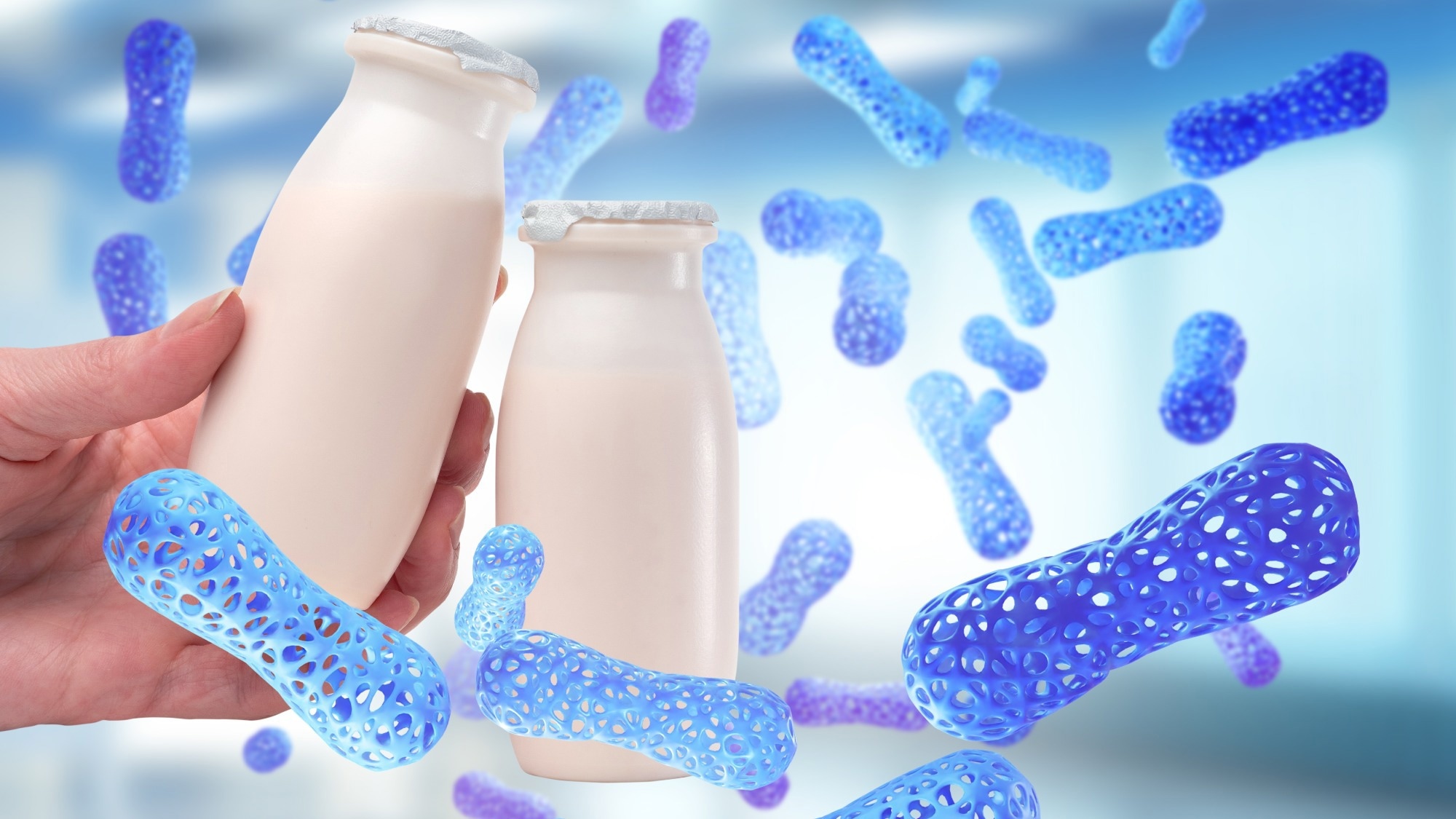In a recent study published in Frontiers in Nutrition, researchers explore the relationship between dietary intake of live microorganisms and cardiovascular health (CVH) outcomes among adults in the United States.
 Study: Association between dietary live microbe intake and Life's Essential 8 in US adults: a cross-sectional study of NHANES 2005-2018. Image Credit: FOTOGRIN / Shutterstock.com
Study: Association between dietary live microbe intake and Life's Essential 8 in US adults: a cross-sectional study of NHANES 2005-2018. Image Credit: FOTOGRIN / Shutterstock.com
How diet affects CVH
Despite advancements in the development of lipid-lowering drugs, cardiovascular disease (CVD) remains a significant cause of death throughout the world, thus impacting economic and social development.
Dietary patterns are implicated in poor CVH, as gut microbiota convert many nutrients into metabolites. This relationship led to the introduction of Life's Essential 8 (LE8) by the American Heart Association to improve CVH and reduce CVD.
The LE8 covers four health factors, including blood pressure (BP), body mass index (BMI), blood glucose, and blood lipids, as well as four health behaviors of sleep health, nicotine exposure, physical activity (PA), and diet. However, the relationship between live microorganisms in the diet and LE8 is poorly understood.
About the study
Data for the current study were obtained from the National Health and Nutrition Examination Survey (NHANES) and included seven survey rounds from 2005 to 2018. All study participants were over 20 years of age and provided information on their dietary live microbial intake, LE8, sample weights, and other relevant covariates.
Live microbial quantity per gram was quantified from 9,388 food items, and study participants provided detailed dietary intake information during in-person interviews and telephonic follow-up calls. This information was subsequently used to classify study participants with low, medium, and high levels of live microbe content.
LE8 scores were calculated as an unweighted average of the eight indicators and ranged from zero to 100. Based on this score, individuals in the range of 80-100 points were classified as having high CVH, 50-79 points were considered medium CVH, and zero to 49 points were classified as having low medium.
Race and ethnicity, gender, age, education, marital status, socioeconomic status, health insurance, alcohol consumption, obesity status, daily nutrient intake, and medical history were included as additional covariates. Chi-square tests, one-way analysis of variance (ANOVA), and linear regression models were used to analyze the dataset.
Study findings
After applying exclusion criteria, 10,531 people were included in the final analysis. Females accounted for slightly more than half of the study cohort, with an average age of about 48 years.
Non-Hispanic White was the predominant ethnicity. Most study participants had at least a college education and health insurance, drank alcohol, and reported being married or in cohabiting relationships.
Most study participants were obese; nearly 9% had CVD, 14% had diabetes mellitus, about 37% had hypertension, and over 70% had hyperlipidemia. About 66% of the study cohort reported a moderate level of CVH. Across CVH levels, participants were similar in terms of daily intake of carbohydrates, hypertension, and hyperlipidemia but significantly different in other aspects.
Significant associations were observed between groups of dietary live microbes and LE8 scores, both in crude models and after adjusting for multiple covariates. For all components of LE8, a higher intake of live microorganisms was associated with better health behaviors and health factor scores.
Those in the high and moderate microorganism groups had lower CVD risk with odds ratios of 0.65 and 0.73, respectively. Notably, in the low-intake group, LE8 score and food intake had a linear negative association, whereas this association was positive in the high-intake group. The moderate microorganism intake group exhibited an inverted 'U' shape regarding the relationship between LE8 and food intake.
Conclusions
Probiotic supplements can reduce oxidative stress, improve immunity, and reduce blood glucose and blood pressure levels, which could maintain CVH. The current study expanded on previous studies that used self-reported medical history to characterize CVD. Taken together, these findings provide strong evidence supporting the consumption of more foods rich in live microorganisms to improve CVH outcomes.
Future studies are needed to identify individuals who may respond differently to microbial consumption based on gender and ethnicity. For example, non-Hispanic black individuals did not exhibit a significant association with live microbe consumption and CVH.
Additional research is also needed to elucidate these associations' mechanisms and include more diverse cohorts. These types of studies have the potential to overcome the limitations of a cross-sectional study based on dietary recall data to establish causality.
Journal reference:
- Wang, L., Wang, S., Wang. Y., et al. (2024). Association between dietary live microbe intake and Life’s Essential 8 in US adults: a cross-sectional study of NHANES 2005-2018. Frontiers in Nutrition (2024). doi:10.3389/fnut.2024.1340028